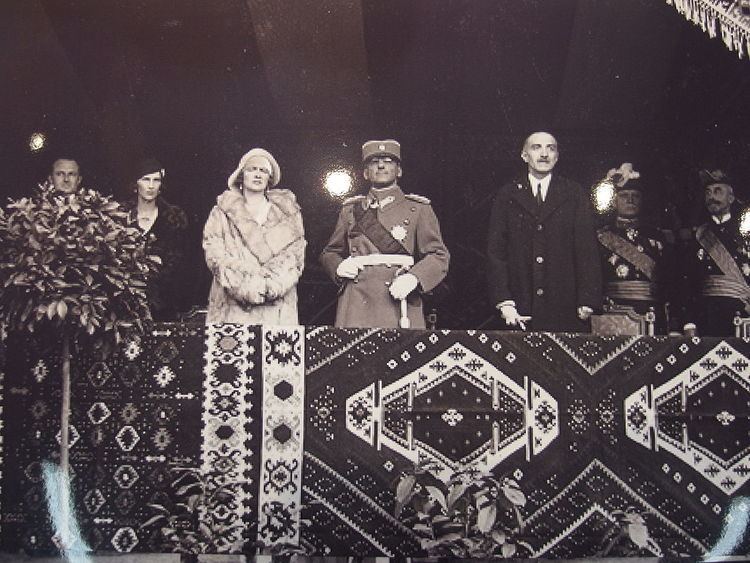 | ||
Pirot rug or Pirot kilim (Serbian: Пиротски ћилим, Pirotski ćilim) refers to a variety of flat tapestry-woven rugs traditionally produced in Pirot, a town in southeastern Serbia. Pirot kilims with some 122 ornaments and 96 different types have been protected by geographical indication in 2002. They are one of the most important traditional handicrafts in Serbia. In the late 19th century and up to the Second World War, Pirot kilims have been frequently used as insignia of Serbian and Yugoslav royalty. This tradition was revived in 2011 when Pirot kilims were reintroduced for state ceremonies in Serbia.
Contents
- Pirotski ilim pirot kilim pirot carpet
- Overview
- Cultural organizations
- Collections
- Ornaments
- Notable people
- References
Pirotski ilim pirot kilim pirot carpet
Overview
Carpet weaving in Pirot dates back to the Middle Ages. One of the first mentions of the Pirot kilim in written sources date to 1565, when it was said that the šajkaši boats on the Danube and Drava were covered with Pirot kilims.
Pirot was once the most important rug-making centre in the Balkans. Pirot is located on the historical main highway which linked central Europe with Constantinople. Pirot was also known as Şarköy in Turkish. The Pirot carpet varieties are also found in Bulgaria and Turkey, and in many other international collections. One of the chief qualities are the colour effects achieved through the choice and arrangement of colours. In the beginning of the 19th century plant dyes were replaced by aniline colourings.
"The best product of the country is the Pirot carpet, worth about ten shillings a square metre. The designs are extremely pretty, and the rugs, without being so heavy as the Persian, or so ragged and scant in the web and woof as Caramanian, wear for ever. The manufacture of these is almost entirely confined to Pirot,"
From Pirots old Turkish signification as Şarköy stems the traditional trade name of the rugs as Şarköy-kilims. Stemming from the homonym to the today's Turkish settlement of Şarköy in Thracia, which had no established rug making tradition, Şarköys are often falsely ascribed to originate from Turkey. Also in the rug selling industry, Şarköy are mostly labeled as being of oriental or Turkish origin as to easier sell them to non familiar customers as they prefer rug with putative oriental origin. In fact, Şarköys have been established from the 17th century in the region of the Western Balkan or Stara Planina mountains in the towns of Pirot, Berkowiza, Lom, Chiprovtsi and Samokow. Later they have been also produced in Knjaževac and Caribrod.
Cultural organizations
Collections
Ornaments
Pirot kilims with some 122 ornaments and 96 different types have been protected by geographical indication in 2002.
